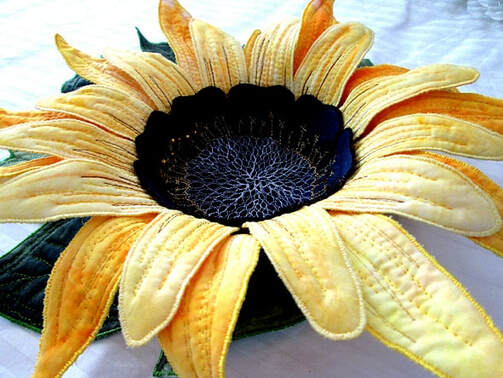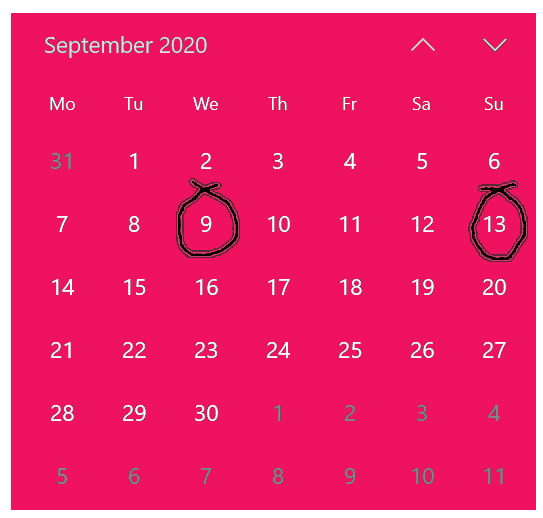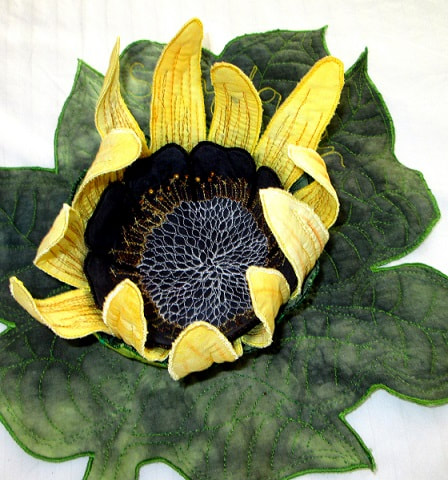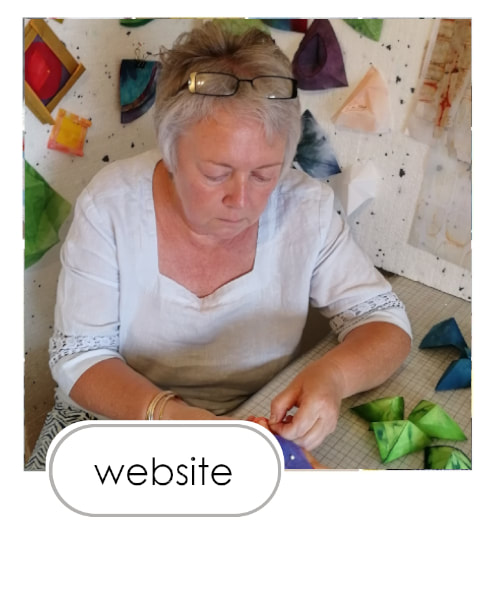|
As is seems pop-up lock-downs and self isolation are going to be with us for a while yet I thought it was about time I did something positive, rather than just sitting back and waiting for the 'new normal' to arrive. So, after a lot of thinking and trialling different things I am about to start online classes.
To begin with I am going to start with my tried and tested Sunflower Bowl class. This class is one of my favourites and will definitely be suitable for online teaching. I have tried a few online classes myself lately and unfortunately not all of them have been terribly satisfactory, ok maybe, but not the best. So I wanted to make sure that the classes I teach online are ones which will work and give everyone who participates an enjoyable time and leave them feeling it was worthwhile. After the success of the 12 Days of Christmas Block-a-Month class I taught last year I am once again teaming up with the lovely people at Midsomer Quilting to offer this class to individuals. It will be a live one-day class with demos by me along with friendly chat, lots of questions and answers and a few laughs along the way. There are two dates on offer next month - Wednesday 9th September and Sunday 13th September - so not too long to wait either! I'm limiting it to 10 participants per class to make sure that everyone has a chance to talk and ask questions and we can keep it as friendly as possible. The classes will work like this: It is important to note that this is not a sew-along class. I will be demonstrating the step-by-step process of creating the sunflower bowl from fabric and stiff interfacing. You will then make the bowl in your own time, either the same day or at some time in the future. The class will be taught using the Zoom platform and will be recorded. All participants will receive a copy of the recordings as soon as possible after the demos, (hopefully there will only be a 20 minute or so delay to allow for uploading) which you can watch as many times as you wish. (But please note, after two weeks the recordings will expire on the server.) The class will be broken into 3 sessions, all on the same day, so nobody gets square eyes. There will be 2 sessions in the morning (with a built in tea break) and 1 at the end of the day, to give everyone a chance to review what they have done. It will also be an opportunity to share (if you wish) and to ask any more questions, swap ideas and maybe even set up a closed Facebook /Whatsapp group. On the date you choose you will join the Zoom class (starting at 10am) and watch me demonstrating live. You will be able to interact with me and other participants, asking questions as I work. It will be a fun and relaxed class, not quite like being in the same room as everyone else, but the next best virus-free thing! The only thing I ask of you is that you know how to join the Zoom class (you click on a link in an email I send you) and to be able to mute and un-mute yourself. Its pretty straightforward. More details of how the day will run can be found in a booklet I have drawn up which you can view by clicking on the black button below.
If this sounds like something that you would like to try then please visit the Midsomer Quilting website and book you place. (Link to booking page below). De from Midsomer has also very kindly put together a kit for us that has the fabric, freezer paper and interfacing that you need to make the set of sunflower bowls which can be bought online for £12 (inc p&p) from their website. De will post it out to you in time for your class. However, the kit is not a requirement, so if you already have what you need you can use that instead (Requirements list is in the booklet).
A link to the class booking page on the Midsomer Quilting website is below. You can also order your kit here too if you decide to purchase one: https://midsomerq.com/collections/workshops/products/nesting-flower-bowls-with-claire-passmore-june-13th-10am-to-4pm-sewing-machine-required?variant=31721283584023 If this is a success, and I don't see why it wont be, then I will look at converting some of my other classes into online events, so watch this space! If your Guild or group would be interested in this as a full day class then please do get in touch and we can plan together how to get back to enjoying ourselves again. Thanks for reading. |
|











